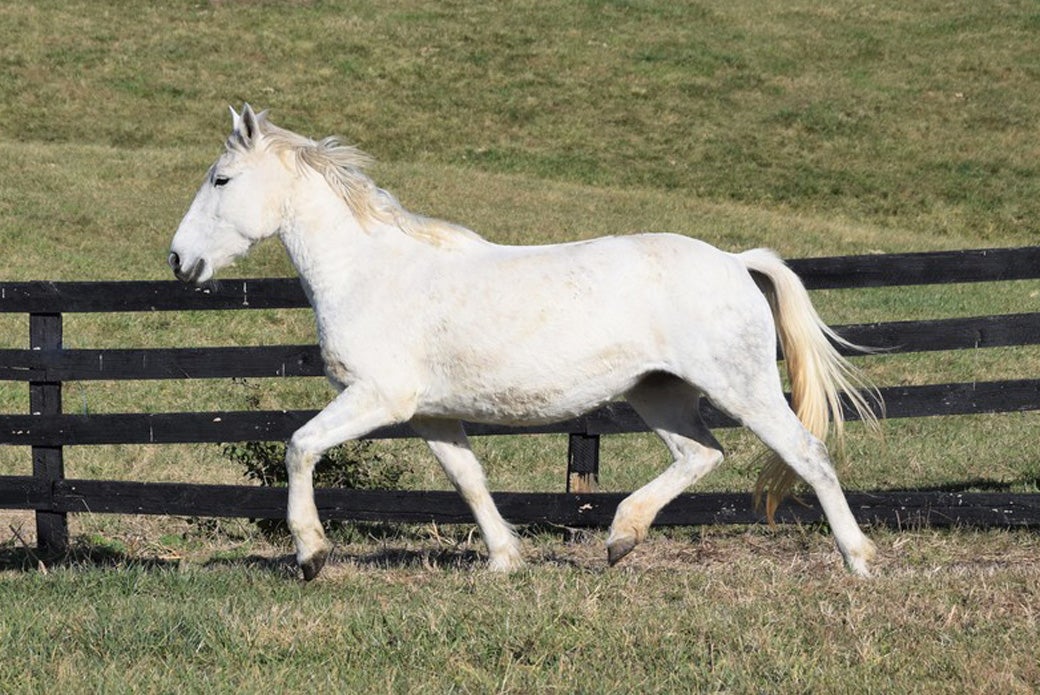A Horse of a Different Color: Common Equine Coat Colors!


It can sometimes seem like horse people have a language all their own. We’re decoding some of the terms you’ll most commonly hear related to horses’ coat colors. Knowing these terms will come in handy when exploring equine adoption and searching for your #RightHorse on My Right Horse!
Bay
A bay horse has a brown body with defining black shading on their legs, mane and tail. You’ll see quite a few variations of this stunning coat color. A dark bay can have an almost black body, while a “blood bay” refers to a brighter shade of red-brown. Bay horses, like any other coat color, can have white markings on their lower legs or face.


Chestnut/Sorrel
Chestnut horses have a red bodies, manes and tails. In the Western disciplines you’ll commonly hear chestnuts called “sorrel,” with the term “chestnut” being reserved for the darker brown-red coats. Chestnut horses may have white markings, but they do not have any black on their bodies.


Gray
Gray horses are exactly as their name describes. Gray horses are born with a variety of different coat colors and slowly “gray out” over their first few years of life. This process continues throughout their lives until their coats are white. Many gray horses develop little flecks of color throughout their bodies called “fleabites.” This color is often called “flea-bitten gray” and it develops with age on some gray horses.


Black
Black horses are less common than you might think, since it’s a recessive coat color that is frequently modified by more dominant genes.


Roan
Roan horses have white hairs interspersed as a secondary color throughout their bodies, giving a shimmery effect. A red roan is a chestnut horse with white hairs, while a bay roan is—you guessed it—a bay horse with white hairs interspersed throughout their coat. A blue roan is also possible, which is a black coat base with white hairs mixed in throughout.


Palomino
Palomino horses have golden coats with white manes and tails. Palominos can vary from a rich golden color to a much creamier, light yellow color.


Buckskin
Similar to a palomino, buckskin horses have a beautiful golden coat color. Unlike a palomino, they’ll have black on their legs and will have a black mane and tail.


Dun
A dun horse has a gene that “dilutes” the color of their base coat and adds additional features; a dun horse will always have a stripe down their back called a dorsal stripe. Often, they’ll have a darker face and legs, and will sometimes have horizontal stripes on their legs. Red and bay duns are exactly as you’d imagine—a variation of chestnut and bay base coats. A horse who has the dun gene affecting a black base coat is called a grulla.


Pinto
Pinto horses have large patches of color and white throughout their bodies. A variety of different coat patterns have been identified, and there are specific equine registries that work to preserve and identify horses with pinto patterns.


Appaloosa
Appaloosa is both a horse breed and a color. You’ve likely seen an Appaloosa before—they’re notable for their beautiful spots. While a registered Appaloosa will almost always have the distinctive spots, other breeds can occasionally display Appaloosa markings (although it is very rare).


Now you’re a horse-color expert and will be able to walk into any barn and correctly identify and describe the horses in front of you.
If you’re ready to learn more about equine adoption and support at-risk horses, visit My Right Horse. There, you can browse hundreds of adoptable horses, learn more about the adoption process, and easily share your favorite horses on social media to help connect the right horse to the right person.
Source: Read Full Article


